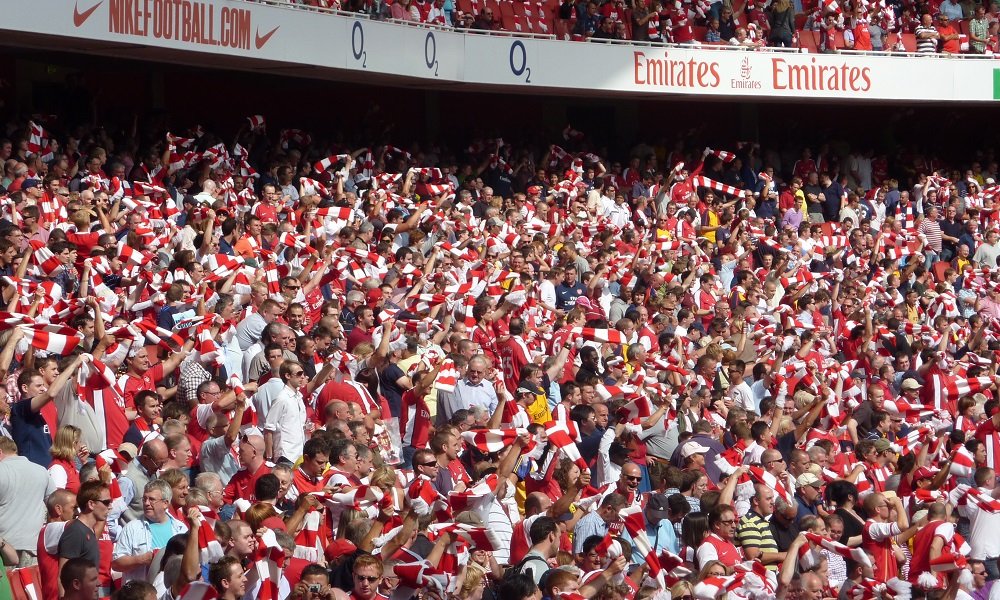Features
What Premier League matchups tend to attract the most viewers?
With its rich history, world-class players, and intense rivalries, it’s no surprise that millions of fans tune in to watch Premier League matches each week.
The Premier League is widely considered one of the most popular and exciting football leagues in the world. With its rich history, world-class players, and intense rivalries, it’s no surprise that millions of fans tune in to watch matches each week.
As a football fan, it’s important to know which Premier League matchups tend to attract the most viewers. This knowledge can help you plan your viewing schedule and ensure that you don’t miss out on the most exciting games of the season. It can also give you insight into the factors that make a match particularly appealing to viewers, such as team rivalries, player matchups, and game significance.
In addition, understanding which Premier League matchups attract the most viewers is important for broadcasters, sponsors, and advertisers. They rely on high viewership numbers to generate revenue and reach their target audience. By knowing which matchups are likely to attract the most viewers, they can tailor their advertising and promotional efforts accordingly.
Overall, knowing which Premier League matchups tend to attract the most viewers is essential for both fans and industry professionals. It can help fans plan their viewing schedule, provide insight into what makes a match appealing to viewers, and help industry professionals generate revenue and reach their target audience.
Top Premier League matchups
There are several Premier League matchups that tend to attract the most viewers each season. These matches are usually highly anticipated by fans and generate significant buzz in the media. Here are some of the top Premier League matchups and why they are particularly appealing to viewers:
Manchester United vs. Liverpool
This is arguably the biggest rivalry in English football and is always highly anticipated by fans. In the 2019-2020 season, the match between Manchester United and Liverpool at Old Trafford attracted a global audience of 644 million viewers, making it the most-watched Premier League match ever. The intense rivalry between these two historic clubs, as well as their success in the league, makes this matchup one of the most popular.
Manchester City vs. Manchester United
This is another highly anticipated derby matchup that is always exciting to watch. The 2019-2020 season match between Manchester City and Manchester United at the Etihad Stadium attracted a global audience of 479 million viewers. Both teams have a large following, and the intense local rivalry between them makes this matchup one of the most popular.
Arsenal vs. Tottenham Hotspur
This matchup, known as the North London Derby, is one of the most fiercely contested in English football. The 2019-2020 season match between Arsenal and Tottenham at the Emirates Stadium attracted a global audience of 232 million viewers. The intense local rivalry, as well as the high-quality football that both teams usually play, make this matchup a fan favorite.
Chelsea vs. Liverpool
This is another matchup between two highly successful clubs that often produces exciting football. The 2019-2020 season match between Chelsea and Liverpool at Stamford Bridge attracted a global audience of 203 million viewers. Both teams have a large following, and the matchup between their star players makes this matchup one of the most popular.
Overall, these Premier League matchups attract the most viewers due to the intense rivalries, high-quality football, and historic success of the clubs involved. Fans around the world tune in to watch these matchups to see their favorite teams compete against their biggest rivals.
Factors that contribute to a match’s popularity
There are several factors that can influence the appeal of a Premier League match to viewers. Here are some examples of factors that can contribute to a match’s popularity:
Team rivalries: One of the most important factors that can make a Premier League match popular is the rivalry between the teams involved. Matches between bitter rivals such as Manchester United and Liverpool or Arsenal and Tottenham Hotspur are always highly anticipated by fans due to the intense history between the clubs. This creates an added level of excitement and tension, making the match more appealing to viewers.
Player matchups: Another factor that can make a Premier League match popular is the individual player matchups on the pitch. Fans may tune in to see a particular star player like Cristiano Ronaldo or Lionel Messi face off against another top player, or to see how a new signing performs against a rival team. This can create a buzz around the match and attract more viewers.
Game significance: The significance of a Premier League match can also affect its popularity. Matches that have a direct impact on the league title race, relegation battles, or European qualification are more likely to attract a larger audience as fans are eager to see how their team performs in a high-stakes game.
In addition to these factors, broadcasting and advertising can also play a role in a match’s popularity. For example, TV networks may heavily promote a particular match, or casinos such as those you can see on WTVR may sponsor the broadcast, in order to generate higher viewership and drive revenue.
Overall, a combination of factors can influence the popularity of a Premier League match. By understanding what factors make a match appealing to viewers, broadcasters and advertisers can tailor their efforts to generate higher viewership. And for fans, knowing what makes a match popular can help them plan their viewing schedule and ensure they don’t miss out on the most exciting games of the season.
Historical trends
Analyzing historical data can provide valuable insights into the Premier League’s most popular matchups. By examining viewership trends over time, we can identify which matches consistently attract high viewership and how these trends have changed over the years. Here’s an overview of some notable trends:
Manchester United vs. Liverpool: Matches between these two historic clubs consistently rank among the most-watched Premier League matches. In recent years, however, their popularity has waned slightly due to Liverpool’s dominance in the league and Manchester United’s relative struggles. Notable matches between these two clubs that attracted high viewership include the 2018-2019 season match at Old Trafford, which was watched by over 700 million viewers worldwide.
Manchester City vs. Manchester United: This derby matchup has grown in popularity in recent years as both teams have become more successful. The 2019-2020 season match between these two clubs at the Etihad Stadium, which was won by Manchester United, attracted a global audience of 479 million viewers.
Arsenal vs. Tottenham Hotspur: The North London Derby has consistently been one of the Premier League’s most fiercely contested matchups. Notable matches between these two clubs include the 2004-2005 season match at Highbury, which was watched by over 500 million viewers worldwide.
Chelsea vs. Liverpool: Matches between these two clubs often produce exciting football, and their popularity has remained consistent over the years. Notable matches between these two clubs include the 2018-2019 season match at Anfield, which was watched by over 450 million viewers worldwide.
It’s worth noting that the popularity of Premier League matchups can fluctuate based on a variety of factors, including the success of the clubs involved, the competitiveness of the league, and the availability of broadcast coverage. Nonetheless, certain matchups consistently attract high viewership, and these trends provide valuable insights into what makes a Premier League match popular.
Overall, memorable Premier League matches that attracted high viewership in the past include the 2011-2012 season match between Manchester City and Queens Park Rangers, which saw Manchester City win the league in the final minutes of the season, and the 2003-2004 season match between Arsenal and Manchester United, which saw Arsenal’s “Invincibles” win the league without losing a single game. These matches attracted worldwide attention and demonstrate the enduring appeal of the Premier League to football fans around the world.
Conclusion
In conclusion, this blog post has highlighted some of the Premier League’s top matchups that tend to attract the most viewers, including Manchester United vs. Liverpool, Manchester City vs. Manchester United, Arsenal vs. Tottenham Hotspur, and Chelsea vs. Liverpool. We’ve discussed the factors that contribute to a match’s popularity, such as team rivalries, player matchups, and game significance, and how historical trends can provide insights into viewership patterns.
Understanding what matchups tend to attract the most viewers is important for both fans and industry professionals. Fans can use this knowledge to plan their viewing schedules and ensure they don’t miss out on the most exciting games, while industry professionals can use it to generate revenue and reach their target audience.
Looking ahead, the future of Premier League viewership is likely to continue to evolve. With the rise of streaming platforms and social media, fans can now access Premier League content in new and innovative ways. Additionally, the league’s international appeal is growing, with matches being played around the world and broadcast to audiences in new markets. As the league adapts to these changes, understanding what matchups tend to attract the most viewers will remain an important consideration for broadcasters, sponsors, and advertisers.
Overall, the Premier League’s popularity is driven by a combination of exciting football, intense rivalries, and passionate fans. By understanding what makes a match appealing to viewers, we can better appreciate the unique appeal of this world-renowned football league.
















